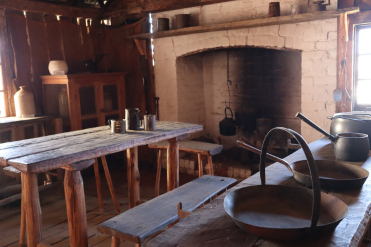A rare and beautiful new species of gecko has been discovered in North Queensland.
Dr Conrad Hoskin, a tropical biologist at James Cook University, said the gecko was discovered in the hills behind Townsville.
It was found at The Pinnacles, a small, rugged range on the western edge of Townsville. The species has been named the Pinnacles Leaf-tailed Gecko (Phyllurus pinnaclensis) in reference to the fact it is entirely restricted to The Pinnacles.
“We were doing surveys around the hills looking for gecko populations. At first, it did look a bit like another known gecko species, but there were some differences. When we got a chance to look at the genetics and morphology in detail it was clear it was a different species,” said Dr Hoskin.
He described the animal as ‘big and prickly’ and belonging to a uniquely Australian group of geckos called leaf-tailed geckos.
Dr Hoskin said the gecko only lives among rocks in the rainforest, hiding among the rocks during the day and emerging on boulders at night to hunt for insects and spiders.
“It’s superbly camouflaged and is near-impossible to see on the rocks. It has long, skinny legs and fingers tipped with sharp claws. Unlike many geckos, it does not have sticky pads on its feet,” he said.
Dr Hoskin said it is one of Australia’s rarest species.
“It has a tiny distribution and a total population probably less than 250 individuals. It’s naturally protected in its rocky habitat but threats include wildfires, invasive species and poaching by reptile collectors.”
Dr Hoskin said the species shows just how much we still don’t know about the diversity around us.
“This gecko has been tucked away, undiscovered, on the doorstep of Townsville. The discovery of this species highlights the need to protect and manage dry rainforest patches in the Townsville region, both for this species and for other potentially threatened species they contain.”
It is the 30th new species Dr Hoskin has been involved in officially describing.
Photos of the gecko in the wild are available here.
The new species is described in the latest edition of the international journal Zootaxa. Link here.








